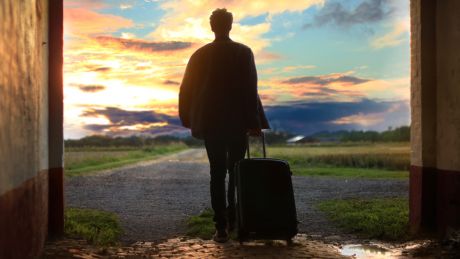The Kit to Pack for an Endurance Event
With the Fitbit Fifty fast approaching, we look at what the challengers will be packing, as well as what might be useful on your challenge

On 30th September, two teams of six amateur athletes will depart from Buckingham Palace on a mission of sporting endeavour that will take them to Edinburgh Castle and back within 50 hours. They will complete the non-stop journey by cycling in pairs and running five 10Ks as a team. Their six-week training plan has prepared them physically, but what kit are they preparing for the race itself?
A Peek at the Fitbit Fifty Kit List
While no means an exhaustive list, here are some of the key items challengers will load into the support vehicles.
Each participant has been equipped with a Fitbit Surge with built-in GPS to ensure they’re keeping up the pace, as well as a GPS device to mount on their bikes so they don’t get lost. They’ll also be sporting nifty Fitbit Fifty running tops, cycle jerseys, arm warmers, gilets, waterproof jackets and bib shorts, in addition to their own favourite base layers, footwear for running and cycling, cycling caps, helmets, socks and so on.
The challengers have done their fair share of endurance events in the past, so are also drawing on their own experience to include those little things that can make a difference. To soothe muscles and help them recover, they’ll be bringing calf compression sleeves, and mini foam rollers, tiger tails or peanuts (two golf balls taped together – handy for isolating individual muscles) to self massage.
Since their feet will take a pounding, Compeed blister covers will help preserve the skin on the challengers’ feet, while shoe covers will fend off rain and newspapers will help to dry out any shoes that do get soaked.
Endurance Event Kit
The Fitbit Fifty is unique, so it’s unlikely you’ll need to follow the challengers’ kit to the letter if you’re setting out on your own adventure, so we asked endurance specialists for the first things on their packing lists.
Cycling: Mike Cotty
Endurance athlete and founder of thecolcollective.com
Power meter: “Wattage is a number that never lies. Being able to monitor it during an event will help you get your pacing right, knowing you’re hitting the numbers you can sustain.”
Sunglasses: “Make sure you protect your eyes, not only from the sun but from other foreign objects thrown up from the road. Every time a suicide fly smacks against my lenses at high speed, I’m reminded just how important this piece of kit is.”
TENS machine: “Very useful both in the run-up to an event and afterwards to maximise blood flow and clear lactic acid in the muscles. I have found it especially useful for muscle soreness, tightness and injury.”
GPS computer: “Keeping tabs on where you are, how far you’ve gone and how much further there is to go is good for your mental state, as it breaks down each section of the ride or event into more manageable segments.”
Waterproof jacket: “A lightweight, packable waterproof that is easily stowed in a rear pocket is absolutely essential.”
Cycling: James Bowtell
Bowtell set the first Guinness World Record for cycling across Europe in 2015 (Ufa, Russia, to Cabo da Roca, Portugal, in 37 days)
Chamois cream: “Spending so long in the saddle obviously takes it toll on your backside. Applying chamois cream is a good way to prevent, as well as treat, saddle sores.”
Spare shorts: “If your challenge is non-stop and over consecutive days, having a spare pair of shorts to rotate and keep you clean will minimise the risk of saddle sores.”
Hand wipes: “On a multi-day event, staying healthy is key. If you can, pack some wipes or alcohol gel to minimise the risk of picking up a bug when your immune system is down.”
Lights: “The clock doesn’t stop when the sunlight does, but making sure you’re visible and safe while competing in the dark is a must.”
Sun protection: “I always pack sun cream for long-distance cycling challenges as there’s nothing worse than having to deal with burnt skin, especially when trying to sleep and recover.”
Running: Tobias Mews
Adventure athlete and journalist
GPS watch: “Having a sports watch to keep track of progress is essential for keeping up to speed and staying safe.”
Hydration vest: “Staying hydrated is paramount in any sports event, and a hydration pack that can be worn enables you to carry liquids without restricting movement.”
Trail shoes: “If you’re going to be running on varying surfaces, having a pair of shoes designed for that is key. A trail shoe, which has more grip and better stability than an ordinary running shoe, is a great choice.”
A Buff: “A Buff is so multi-functional and light, it’s not worth not taking one. It can be worn as a neckerchief, bandana, headband, balaclava and more.”
Running: Sean Conway
Conway ran the length of Britain in 44 days (1,011 miles from John O’Groats to Land’s End)
GPS tracker: “Good for letting friends and family follow your progress – it should also have an SOS button.”
Hip bag: “Food, food, food. It’s always important to eat, and having a hip bag allows you to access food on the go. It can also hold the other bits you need.”
OS Maps app: “Ordnance Survey maps are perfect to have on your phone, as you can see the trails and gradient of hills.” Starting at £3.99 per month, ordnancesurvey.co.uk
Waterproof socks: “Running with wet feet for hours is not fun, slows you down and can end your race it gets too bad.”
Adventure mascot: “It’s very important to have a mascot to keep you sane during the long days out on the road. Mine even has its own Twitter account, @AdventureMascot!”
Get the Coach Newsletter
Sign up for workout ideas, training advice, reviews of the latest gear and more.
